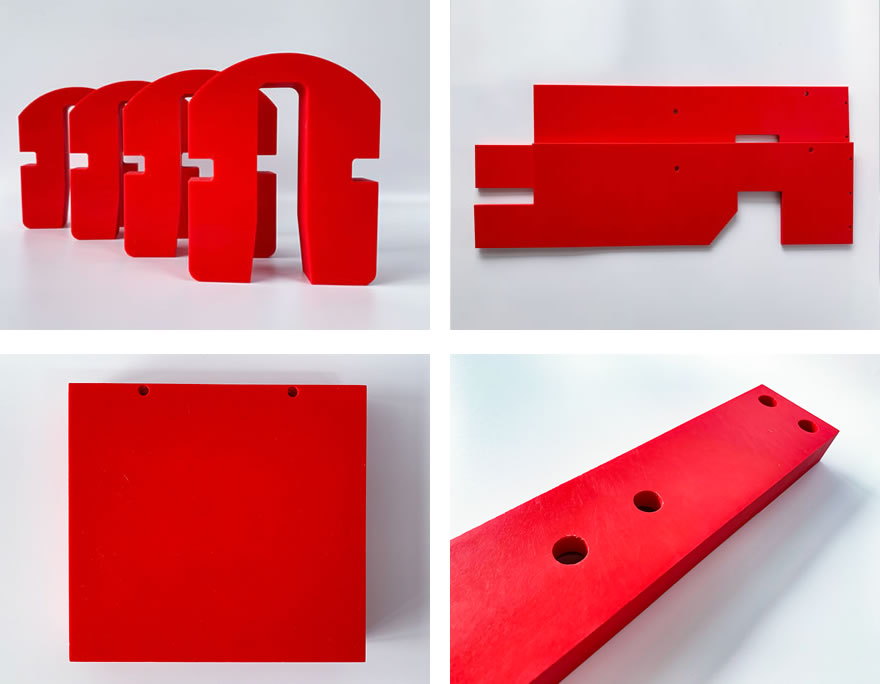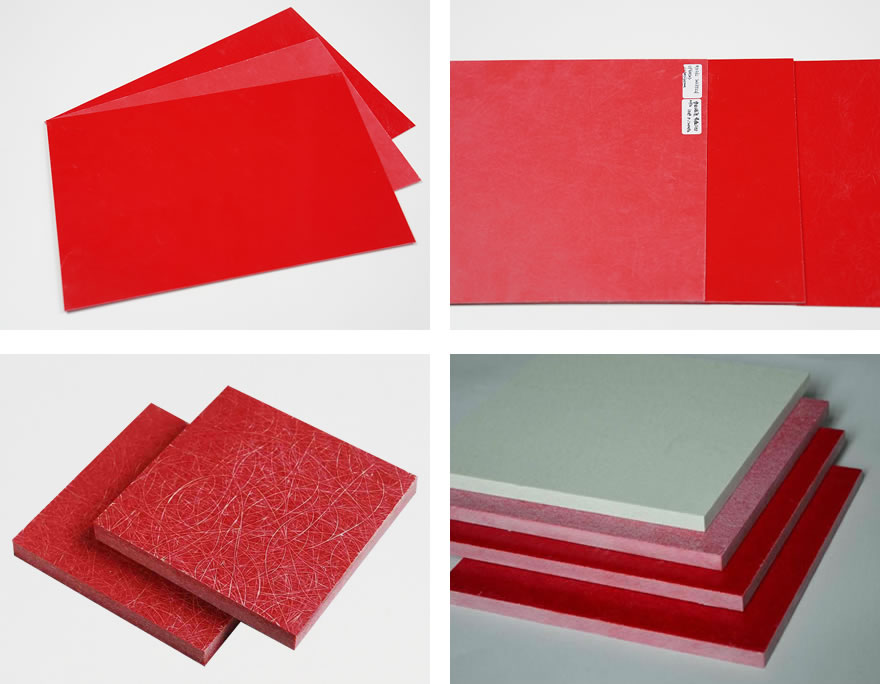GPO-3 insulating laminate is a cornerstone material in electrical insulation, leveraging its exceptional electrical p...
GPO-3 insulating laminate is a cornerstone material in electrical insulation, leveraging its exceptional electrical properties, flame retardancy, mechanical strength, thermal resistance, and dimensional stability. It is indispensable in medium/high-voltage electrical equipment. Key application scenarios and technical advantages are detailed below:

Insulating Frames/Spacers: Supports windings against electromagnetic forces and thermal stress; requires high mechanical strength and low shrinkage.
End Insulation/Interlayer Insulation: Isolates HV/LV windings to prevent creepage/flashover; relies on high dielectric strength (>10 kV/mm).
Blocks/Clamping Insulation: Secures windings and maintains cooling paths; demands thermal resistance (155°C class) and anti-creep properties.
Lead Supports: Secures and insulates leads against vibration-induced short circuits.
Functional Barriers (Phase/Compartment Barriers):
→ Critical Role: Physically isolates phase busbars or functional units (e.g., circuit breaker/cable compartments) to block arc propagation.
→ Key Metric: CTI ≥ 600V (high comparative tracking index) ensures no conductive paths form in polluted/humid environments.
Busbar Insulating Supports (Clamps/Brackets):
→ Secures Cu/Al busbars to maintain phase-to-phase/ground clearances (e.g., ≥125mm for 10kV systems).
→ Withstands short-circuit electrodynamic forces (flexural strength >200 MPa).
Contactors/Arc Chute Insulation:
→ Encloses breaker contacts for insulation and arc control; requires arc resistance (>180s).
Operating Plates/Shutters: Insulating substrates for mechanical interlock components.
Slot Wedges/Slot Insulation: Secures windings and isolates cores; resists corona degradation (critical for VFD motors).
End-Winding Phase Insulation: Prevents phase-to-phase shorts; requires flexibility for binding processes.
Insulating End Shields/Ventilation Barriers: Isolates windings from housings; withstands thermal rise (155°C H-class continuous).
Phase-Separation Blocks: Isolates densely packed phase conductors; key metrics include dielectric strength and flame retardancy (UL94 V-0).
Joint Insulating Covers: Protects busbar connections against foreign objects and electric shock.
Relay/Contactor Bases: Insulating support for live parts; dimensional stability ensures contact alignment.
Terminal Blocks/Junction Plates: Isolates multiple conductors; high CTI prevents tracking.
Insulating Operating Rods/Handles: Live-part isolation for manual switching devices.

| Property | Specification/Feature | Critical Problem Solved |
|---|---|---|
| Electrical Insulation | Dielectric Strength ≥12 kV/mm Volume Resistivity >10¹³ Ω·cm |
Prevents HV breakdown; ensures safe clearances |
| Flame Retardancy | UL94 V-0 (self-extinguishing <10s) Glow-Wire Ignition ≥960°C |
Suppresses arc-induced fires; meets IEC 60695 |
| Tracking Resistance | CTI ≥ 600V (up to PLC 0 class) | Avoids surface carbonization in polluted/humid conditions |
| Mechanical Strength | Flexural Strength 200-300 MPa Tensile Modulus >10 GPa |
Supports heavy busbars/windings; resists short-circuit forces |
| Thermal Resistance | Continuous Use 155°C (H-class) Short-Term >180°C |
Withstands transformer/motor thermal rise; delays aging |
| Dimensional Stability | Low CTE (≤3×10⁻⁵/K) Water Absorption <0.1% |
Ensures precision assembly; no deformation in humidity |
| Arc Resistance | ASTM D495 >180 seconds | Endures switching arc erosion |
Thickness vs. Voltage Rating:
→ LV (400V): 1.5-3mm
→ MV (10kV): 4-8mm
→ HV (35kV+): Custom laminated structures required.
CTI Class Selection:
→ For Pollution Degree 3/4 (e.g., industrial sites), CTI≥600V is mandatory (e.g., GPO-3™).
Processing Compatibility:
→ CNC Machining: Complex parts (e.g., contactors)
→ Punching: Mass production of standard plates/spacers
→ Lamination: Ultra-thick components (>30mm) require multi-stage hot pressing.
Certification Requirements:
→ International: UL (E331910), IEC 60455
→ China: GB/T 5132.1 (Industrial rigid laminated sheets based on thermosetting resins for electrical purposes)
| Material | Disadvantages vs. GPO-3 | GPO-3 Superior Applications |
|---|---|---|
| Epoxy Laminate | Brittle; low impact resistance; CTI typically ≤250V | High CTI/arc-resistant environments (e.g., barriers) |
| SMC/BMC | Lower mechanical strength; poor fiber orientation | Load-bearing structures (e.g., busbar supports) |
| PPO | Difficult to achieve V-0; HDT <110°C | High-temperature scenarios (e.g., transformer ends) |
| Silicone | Extremely costly; insufficient strength | Cost-effective integrated insulation solution |
Failure Modes:
Surface tracking (low CTI), delamination at high temperatures (resin degradation), fracture under short-circuit forces (low strength).
Preventive Measures:
Use high-CTI grade (≥600V) materials in humid environments.
Design thermal expansion gaps.
Perform dynamic stability simulation (e.g., ANSYS) for busbar supports.
GPO-3’s core value in electrical insulation lies in its integrated trifecta of properties:
High-voltage reliability (dielectric strength + CTI)
Active safety protection (V-0 flame retardancy + arc resistance)
Structural functionality (mechanical strength + dimensional stability)
This establishes GPO-3 as the premier material for insulating structures in equipment up to 35kV, especially in dry-type transformers, MV switchgear, and motor insulation where it remains irreplaceable. Prioritize CTI class, thickness design, and operating temperature during selection.
If you are interested in our products,, please send us a message and we will contact you as soon as we receive it. Email: info@ztaero.com whatsApp: +8616650273778